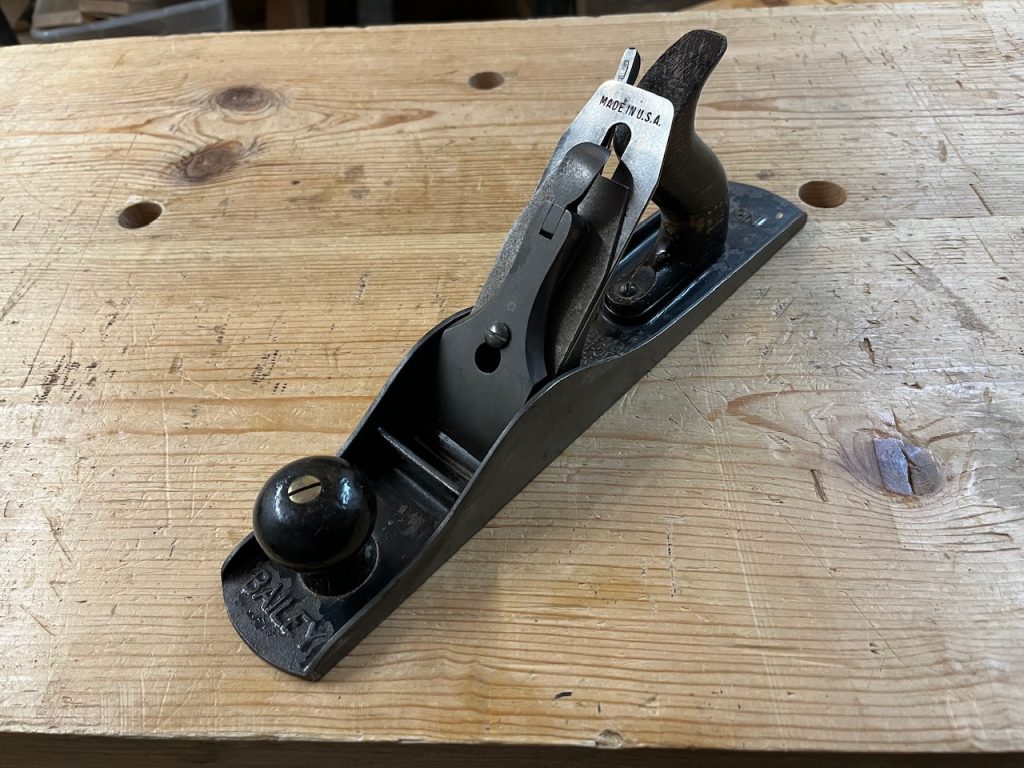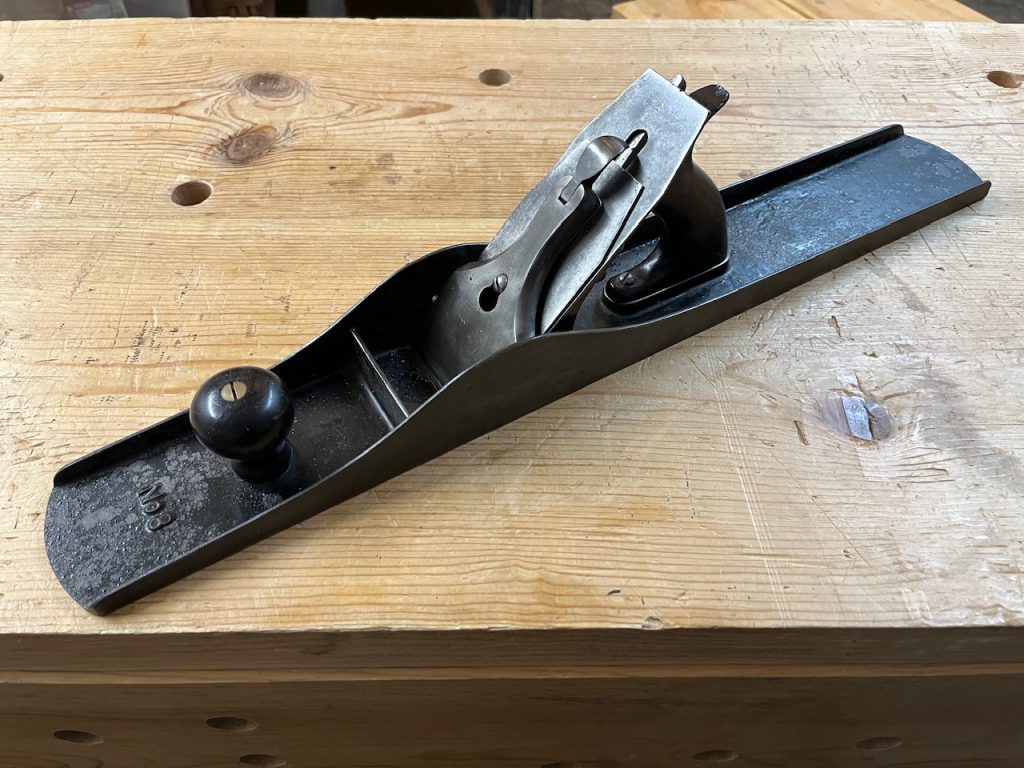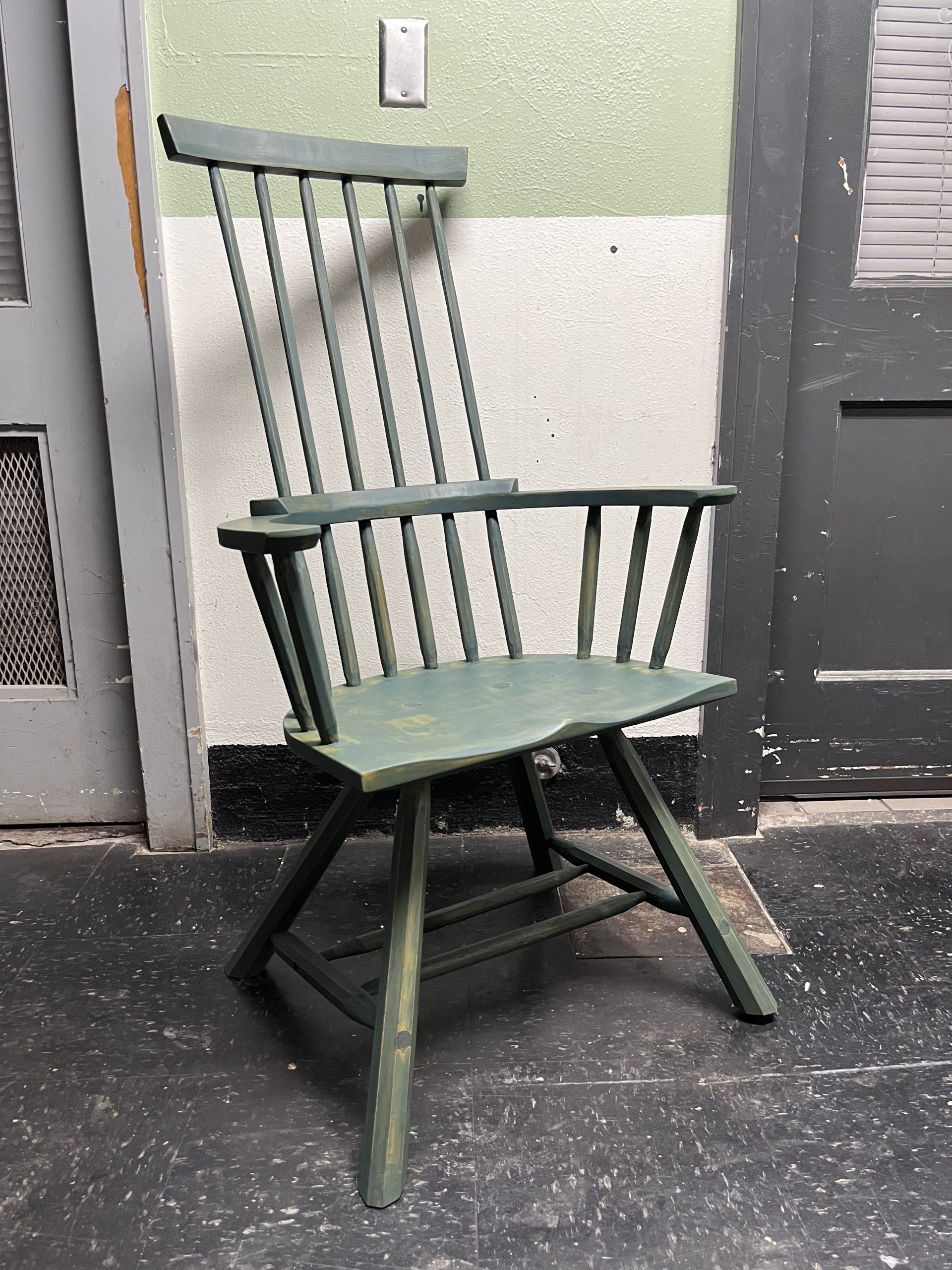Here’s a look at my most frequently used planes.

This is my most-used plane, a Stanley No 5 from around 1920. It was one of my first planes, and I’ve used it on every piece of furniture I’ve built. It’s good for doing medium-sized flattening jobs, quickly taking lots of material off of board edges, and breaking long edges.


This is another No 5, this one from the 1910s. It has a curved blade, which means it’s great for taking off lots of material very quickly. However, it leaves a wavy surface, so it needs a lot more cleanup work than the other No 5 does. I use this for taking out a ton of material, for example the bevel on chair seat bottoms, correcting serious board defects like twist or bowing, or when a board needs to lose a lot of thickness (not fun, avoid this situation as much as possible!).

This one’s a joy, it is huge and old. It’s my Stanley No 8 from around 1900. It’s great for flattening large boards. When you’re taking a consistent shaving across the entire board with this thing, you know it’s dead flat. It is heavy, so I try to do as much work as possible with the smaller No 5s before turning to this one. This one has a previous owner’s initials stamped into the side of the plane body. I like to think about what they might’ve used it for. I actually purchased this one locally from a guy who refurbished planes. I had intended to buy a long wooden plane from him, but when I saw this on his shelf he agreed to sell this to me instead.

Here’s my smoothing plane, a Record No 4, probably from the 1940s or 1950s. The smaller sole lets it follow imperfections in the board, so you can use this to get a smooth surface even if it’s not perfectly flat. It’s in great shape, seems hardly used before I got it. This is usually the last tool to hit any flat surface before finishing.

Here are my block planes, both purchased new from Lie-Nielsen. The one on the left has a full sole. I use it for small, fine work, like squaring up end grain, breaking edges, stuff like that. The other is a rabbet plane. Its blade extends to the edges of the sole, which means it can get into corners on tenon cheeks, or be used to cut a rabbet along the edge of a board.
